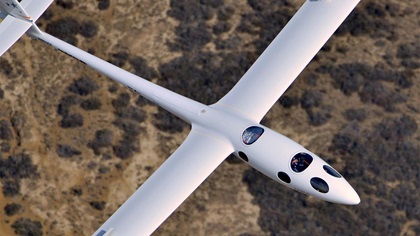Perlan 2 glider topped 26,000 feet in Argentina tests
A glider designed by a project to “send an engineless aircraft to the edge of space” is back at its home base in Minden, Nevada, after a month of testing in Argentina, where it topped 26,000 feet of altitude and remained airborne for more than five hours on a single flight.
The Perlan 2 concluded tests in Argentina’s Patagonia region and returned to “the mountain wave capital of North America” in Minden, where tests will resume. In Argentina, the project learned key lessons for the bid to attain the stratosphere, said a project news release.

“Minden experiences optimal mountain waves in the winter, and the team will begin flight tests in November,” said a Perlan project media representative. “They think that this winter in the U.S., they have a shot at surpassing the 50,727-foot world gliding record set by the founder of The Perlan Project Einar Enevoldson in 2006. Then, team plans to return to Argentina next June to continue their mission to reach altitudes of 90,000 feet.”
Flying the two-place, 1,800-pound, rebreather-equipped glider to that altitude, atop 98 percent of the earth’s atmosphere—at a true airspeed exceeding 400 mph—would mark success in phase two of a three-phase effort that ultimately intends to fly the glider at 100,000 feet and explore the Northern Hemisphere polar vortex. In phase three, “flight speeds will increase to the point where the glider will need new transonic wings,” the project says.
The aircraft’s maiden flight took place on Sept. 23, 2015.
In August 2006, the Perlan 1 glider was flown by the late Steve Fossett and Einar Enevoldson, the project’s founder, to a glider-record-setting 50,772 feet at El Calafate, Argentina. The Perlan 1 glider is on display at the Seattle Museum of Flight.
Airbus became a partner of the nonprofit, volunteer Perlan Project organization in 2014.




